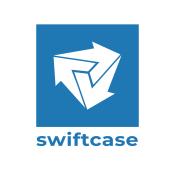Task Widgets Overview
Widgets are a way to manually perform some of the tasks that can be automated on SwiftCase.
You can configure which widgets appear, and who they are visible to in the workflow builder.
They appear on tasks only, on the left hand side of the task page as below:


Generate Document
You can generate a document manually on SwiftCase with the Generate Document widget.


The configuration above would generate the following widget on the chosen status.


Clicking the widget button would prompt the system to generate the chosen document in the background and then deposit it in the Document Manager when ready.
Manual Allocation
Manual Allocation gives you the ability to assign users to the Task as either a Task Owner or an Expert. Client and other relationships can be managed in the quick actions.


The above configuration would generate the following widget on the chosen status


Clicking the widget button presents you with a modal to choose the user to assign as an Expert role. The above configuration configured a filter on the users by role and skill, so only those users with the role Expert and the skill Vehicle Engineer will appear in the dropdown menu.


Form
This is the most popular widget on SwiftCase. Forms allow the easy collection of information and can be configured in a number of ways. You can configure panels, required questions, default answers all in this widget. To see more about questions and their types please visit Question Types, Creating Questions


The above configuration would generate the following widget on the chosen status


Button
After forms, a generic button would be the most popular widget. The key feature of a button is its ability to be tied to a status change.


To ensure that the status change occurs, you would have to map the Button Key to a Moving Rule as below (note that the Button Key values are the same):


This button would appear in the status as below:


Add Note
Adding a note can be performed on the Notes panel on a task. It is sometimes helpful to add the widget for users who may not have access to the Notes section, or just to make it clear that it is necessary as part of a standard workflow.


The note widget would appear on the chose status as below:


Add Note Button
The Add Note Button widget is slightly different. It allows the added functionality of the Button widget: you can change status when the Note is added, and customise the text of the button. This saves an extra click for users.


The above configuration would generate the widget below on the chosen status:


As with the Button widget, a Moving Rule would need to be configured to tell the system to change status:


Content
The content widget can be a very powerful addition to a status. You can provide a tailored message to logged in users, or Chatbot users (simply configure this in the ‘Visible to’ field). You can also use Task Information Tags to pull through answers and format the text using html:


The above configuration results in the widget below:


The email widget is one of the simplest widgets and will perform the same action as the Quick Action ‘Compose Email’ button. Useful as a prompt within a workflow.


Previous Tasks
This widget is useful for quickly seeing any tasks that have the same answer to the configured question (in this case the Delivery Address)


The widget will display any previous tasks that have been created for that postcode:


Create Child Task
Create a child task with this widget. A child task is a separate but related task to the current (or parent) task. A child task is required to complete the parent task in full. In the case of a Support task, a wide range of sub-tasks could potentially be performed to complete the Support request: in SwiftCase you can keep track of these by creating them as a child task.


Create a child task with this widget. A child task is a separate but related task to the current (or parent) task. A child task is required to complete the parent task in full. In the case of a Support task, a wide range of sub-tasks could potentially be performed to complete the Support request: in SwiftCase you can keep track of these by creating them as a child task.


Flag Button
This widget will add the flag as specified from the list in the configuration.


The above configuration will display the widget below:


When clicked, the task will show a panel:


The listings will also reflect the new flag and will be pushed to the top of the listings:


Reminder
Much like the Reminder quick action, you can manually add a reminder to a users calendar through this widget and as such there is very little configuration. Automatically adding a reminder can be handled by the Scheduled Event.
List Child Tasks
The Create Child Task widget will display all of the child tasks of the type as specified in the configuration. If you want to see ALL child tasks of any type then the List Child Tasks widget is useful


The above configuration will display the widget on the status as below:


Document Upload
It is useful to have a prompt for either an internal or client user to upload documents at certain points in the workflow. This is also very useful with the Chatbot, as it means users who do not even log in can interact with the task.


The above configuration would be visible to all users, and the widget would appear as below:


SwiftCase is proudly powered by WordPress
